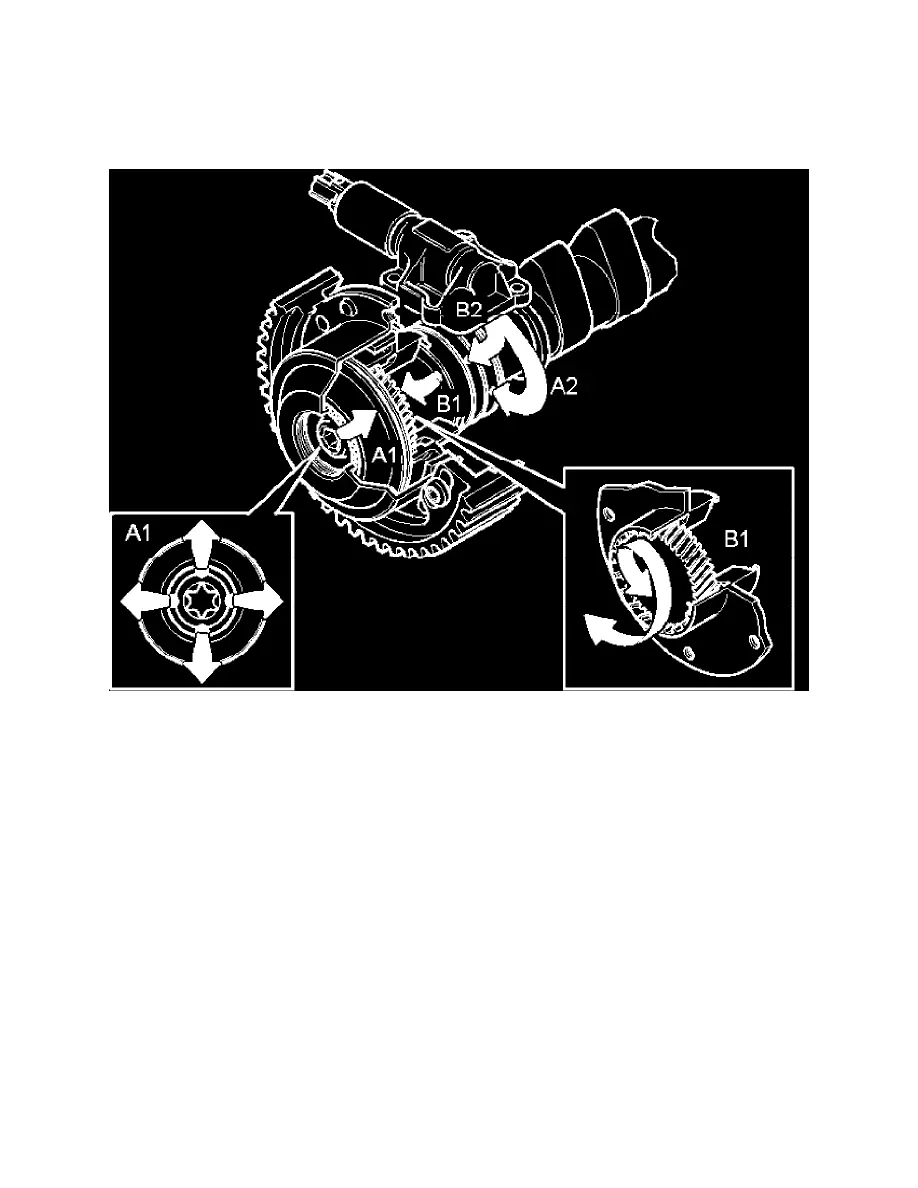S60 L5-2.4L VIN 64 B5244S6 (2003)

certain maximum limit. The camshaft uses the engine oil and the oil pressure to turn itself. The rotation time varies, depending on factors such as
engine speed (RPM), oil pressure and the viscosity of the oil (which depends open the temperature and quality of the oil)
4. The signal from the camshaft position (CMP) sensor is compared with the signal from the engine speed (RPM) sensor when the engine is turned
over to ensure that it is correct. The check stops when the engine has started. If the check returns faulty values, a diagnostic trouble code (DTC) is
stored and there is no camshaft control (CVVT).
Control
Control takes place as follows when deploying the camshaft:
1. Oil is forced from the engine lubricating system to the intake port on the reset valve
2. The engine control module (ECM) grounds the valve, the position of the piston in the valve changes and the oil is guided to the continuous
variable valve timing (CVVT) unit chamber (A1) via the duct (A2) in the camshaft
3. The continuous variable valve timing (CVVT) unit hub is pressed backwards by the oil pressure. The continuous variable valve timing (CVVT)
unit then rotates the hub and the carriers are joined by twisted splines
4. The oil flows to the engine oil pan via the outer ducts on the hub and the reset valve's return hose.
Control takes place as follows when returning the camshaft:
1. Oil is forced from the engine lubricating system to the intake port on the reset valve
2. The engine control module (ECM) breaks the ground connection for the valve. The piston in the valve is then pressed back by a spring. The oil
flows to the continuous variable valve timing (CVVT) unit chamber (B1) via a duct (B2) in the camshaft
3. The hub of the continuous variable valve timing (CVVT) unit is forced forward by the oil pressure that is created. The continuous variable valve
timing (CVVT) unit will rotate back to the non-deployed position
4. The oil flows to the engine oil pan via the center duct on the hub and the reset valve's return duct.
The above takes place very quickly. The engine control module (ECM) controls the deployment and return of the reset valve continually at high
frequency. This results in rapid and exact control.
There are diagnostics for this function.
